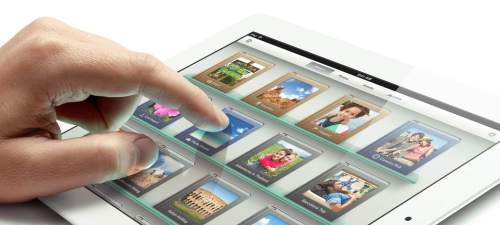Approximately 200 million tablets will have shipped worldwide since 2009, with an additional 1 billion tablets forecasted to ship over the next 5 years.
According to analysts at ABI Research, 22% of users spend $50 or more per month, while 9% spend $100 or more; an amount significantly higher than spending levels posted by smartphone owners.

“Tablets are quickly becoming the go-to transaction screen within the home,” said ABI analyst Jeff Orr.
Interestingly, spending on-device of physical and virtual goods has not yet impacted retail storefronts which are already concerned about their venues turning into showrooms for eventual e-commerce purchases.
Logistics, such as price checking, using a coupon and location-based searches, consistently rank as the most common activities (each performed by more than 50% of tablet shoppers in the previous 90 days) while shopping.
“The opportunity to keep consumers buying in-store squarely remains with the retailer. So far, the presence of a media tablet during the shopping experience has not altered the sales channel where consumers finally buy products,” Orr explained.
“The actual amount of cannibalization that a tablet has on traditional print and TV consumption varies. Most surprising is that tablets are increasingly used in conjunction with other media types (14% for TV; 17% for newspapers and magazines), which makes the experience more immersive than static-only content engagement.”
In related ABI mobile news, analyst Michael Morgan recently confirmed that nearly 196 million smartphones and 451 million handsets were shipped during Q4 2012, bringing 2012 annual totals to 653 million smartphone and 1.6 billion handset shipments, representing a 36% and 2% YoY growth rate respectively. Smartphones accounted for 43% of all handset shipments in Q4, which pushed the devices to 41% of all shipments in 2012.
Unsurprisingly, Samsung retained its lead position overall by shipping 106 million handsets of which 60 million were smartphones in Q4 and capturing 31% of total smartphone shipments. In fact, during 2012, Samsung managed to increase its handset shipments by 21.6% and its smartphone shipments by 123.8%.
Despite missing most analyst estimates in Q4, Apple increased its smartphone shipment share to 24.5%, up from 16.4% in Q3. Cupertino also shipped 47.8 million iPhones in Q4, bringing its 2012 annual total to 135.8 million. Nevertheless, Apple’s 2012 annual shipment growth declined from 96% in 2011 to 46% in 2012.
“It is clear the iPhone’s hyper-growth has ended, and [we] believe Apple’s market share will peak in 2013 at 22%,” said Morgan. “Unless Apple is willing to trade iPhone margins for low cost iPhone shipments, Apple’s handset market share will become dependent on customer loyalty.”
Meanwhile, Nokia shipped 86.3 million handsets and 6.6 million smartphones in Q4, as RIM’s shipments of smartphones declined to 6.9 million.
“Samsung and Apple are both under pressure to maintain their market lead as less costly smartphones gain momentum entering 2013.Technology optimization choices and a diverse handset portfolio are critical decisions over the next 6 to 9 months to come out ahead,” added Orr.






